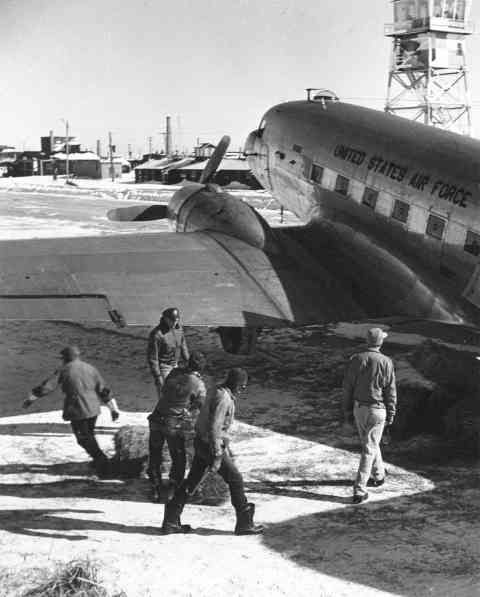Blizzards Then and Now
By Rebecca Hein
Last week's snowstorm, which dumped more than 37 inches of snow on Casper and large amounts on much of Wyoming, calls to mind the Blizzard of 1949. Travel is dangerous or impossible in heavy snowfall, especially when a storm includes low temperatures and strong winds.

When I researched the Blizzard of ’49 for WyoHistory.org, I was struck by how the age of the automobile affected events. Though people had been getting stranded in western blizzards for decades before cars and highways, it appears that in 1949 some got caught away from home, or ran short of food, because they were used to driving to town for groceries. And though they must have known Wyoming winters, apparently not everyone made a practice of stocking up.
Farmers and ranchers, in addition to feeding themselves, had cattle, sheep, pigs and horses to feed. Many animals starved to death during the storm, were suffocated by the deep snow or were maimed when their limbs or other extremities froze. It horrified me to discover that cows lost their teats and bulls their testicles.
It may be impossible to adequately prepare for a natural disaster such as the Blizzard of ’49, especially since it began on Jan. 2 and continued well into February. In April—no matter how hard the wind blows—we can expect the snow to begin melting soon after the storm ends. Not so in midwinter.
Nowadays we still have to plan, but we have one huge advantage, unavailable in 1949: accurate, easily accessible weather forecasts. If we ever had a collective memory of how the smell or feel of the air, or the look of the clouds, can warn us of a blizzard coming in a few days, we may well have lost it by now.
Weather-related road closures are another modern advantage. With travel prohibited on hazardous roads, this surely limits the number of stranded motorists. And with the Wyoming Highway Department’s web cams and road-closure maps, we can make better decisions than ever before about whether and where to travel.
The National Oceanic and Atmospheric Administration (NOAA) and its precursors have been studying the weather since 1870, but forecasts were not widely available to civilians, except aviators, until the 1950s—too late for those who lived through the Blizzard of '49. Although we might shudder at what people and animals had to endure in that storm, we can also be thankful for today's technology that helps us stay safe.
